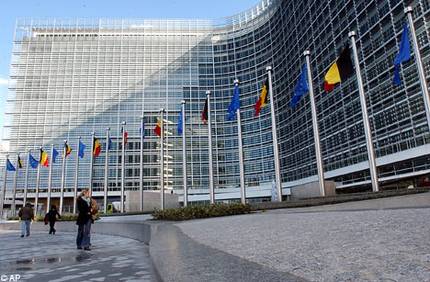European Commission sets new deadline: manufacturers may continue to use old refrigerants
written by Pavel Makhnatch (under supervision of Rahmatollah Khodabandeh and Björn Palm)
HFO-1234yf is accepted to become new low GWP refrigerant to be used in MAC systems. Due to increased demand and insufficient supply, the automotive industry is continuing to experience HFO-1234yf supply problems. Hence, the European Commission allows car manufacturers to use old refrigerant (R-134a) to fill new type approved production vehicles until the end of this year.
European Commission has recently released a note on “The supply shortage of an essential component in mobile air conditioning systems and its impact to the application of Directive 2006/40/EC in the automotive industry “ addressing the HFO-1234yf refrigerant supply shortage problem. As for now, companies DuPont and Honeywell, due to existing patents, are the only worldwide suppliers that can produce the refrigerant HFO-1234yf. But they can not manage to meet the demand as the production facility in Japan, which was disrupted by the events following the earthquake of 11 March 2011, produces only very small volumes of the refrigerant, and the new facility for mass production in China, that should be ready for production at the beginning of 2012, is still not operating due to a new and unexpectedly cumbersome registration process to be completed. Other companies have shown their willingness to produce HFO-1234yf, but faced legislative burden.

According to the note :
The European Commission has decided on 30 March 2012 that, in light of the exceptional circumstances, solely with respect to the shortage of the refrigerant, and for a limited period of time (until December 2012), the Commission will refrain from launching infringement procedures on its own initiative or when receiving complaints regarding non-conformity of vehicles manufactured before 31 December 2012 with the approval requirements.
This course of action is subject to the following conditions:
(1) New types of vehicles will continue only to be type-approved if they are fitted with MAC systems that are compatible with Directive 2006/40/EC.
(2) As long as the refrigerant HFO-1234yf is not available, and with a definitive limitation on 31 December 2012, manufacturers may continue to use the old refrigerant (so-called 134a) to fill new type-approved production vehicles, when this is technically possible.
The problems with HFO-1234yf supply have been noticed before, but only since April this year the problem is finally addressed by EC, since more vehicles require installation of the new system according to the EU legislation.
In the mean time, European Patent Office have revoked the Honeywell’s patent on 'Compositions containing fluorine substituted olefins'. The decision was grounded by insufficiency and lack of novelty and inventive step following the objections from the number of opposing companies.
While these changes will solve the situation, this example illustrates the need to cooperation between the industry and policies. Hence, another legislative act, which controls emissions of F-gases - the F-Gas Regulation -is planned to be revised soon based on the report, presenting the review of the application, effects and adequacy of the F-Gas Regulation study results. the European Commission intends to present a legislative proposal revising the current EU F-Gas Regulation in early October 2012. The new proposal plans to be discussed by industry parties on the
While he MAC Directive prohibits the use of F-Gases with a Global Warming Potential higher than 150 in new new vehicles , the “F-gas regulation” follows 2 tracks of action: avoiding F-Gases in some applications in which more environmentally superior alternatives were already cost-effective and Improving leak-tightness of equipment containing F-Gases. A revised F-gas Regulation's provisions could potentially contribute to the accomplishment of future EU greenhouse gas emission reduction goals and be compatible with, while also implementing any potential new international commitments to reduce the production and consumption of HFCs under the Montreal Protocol.
